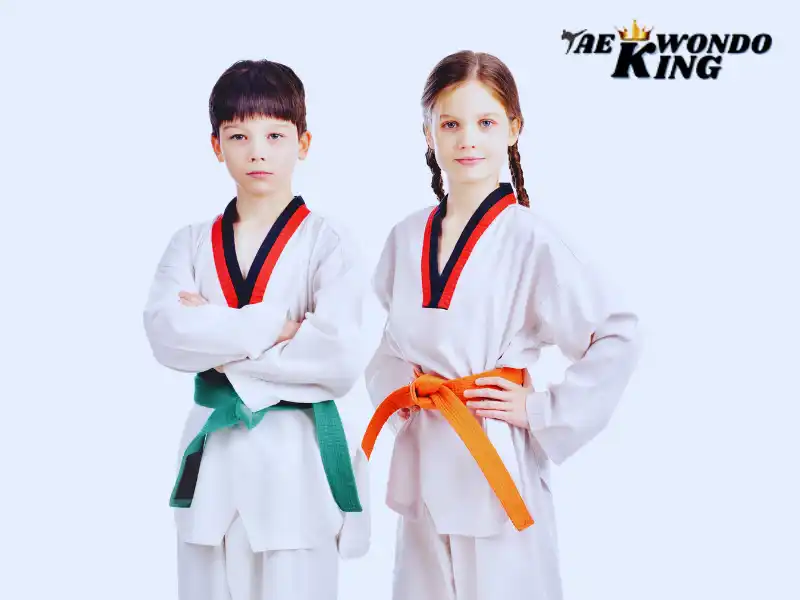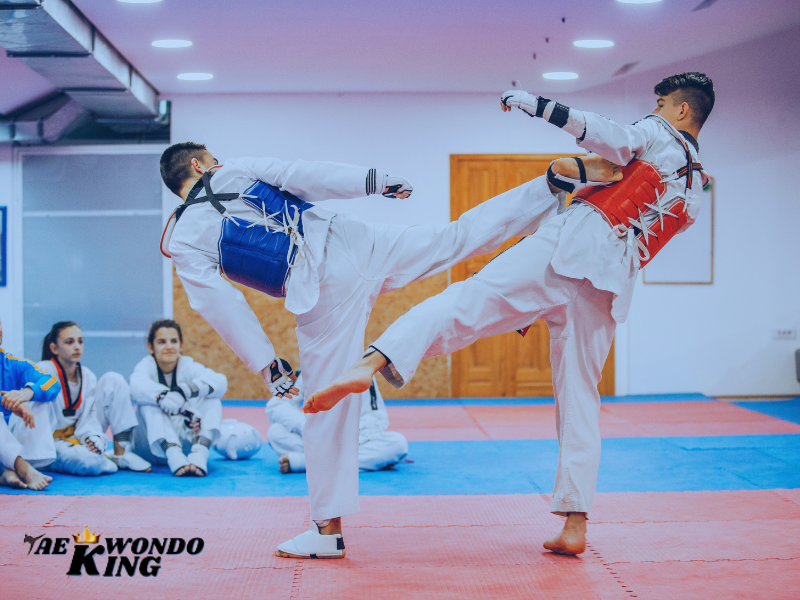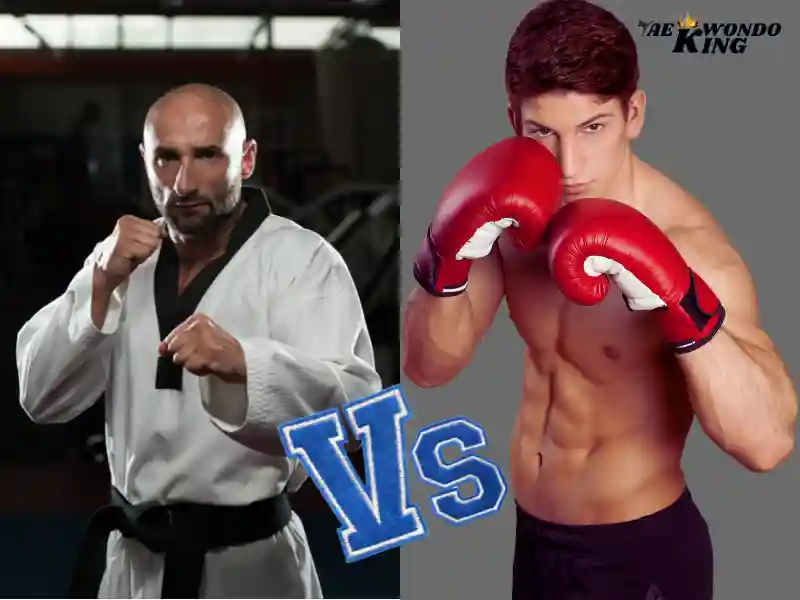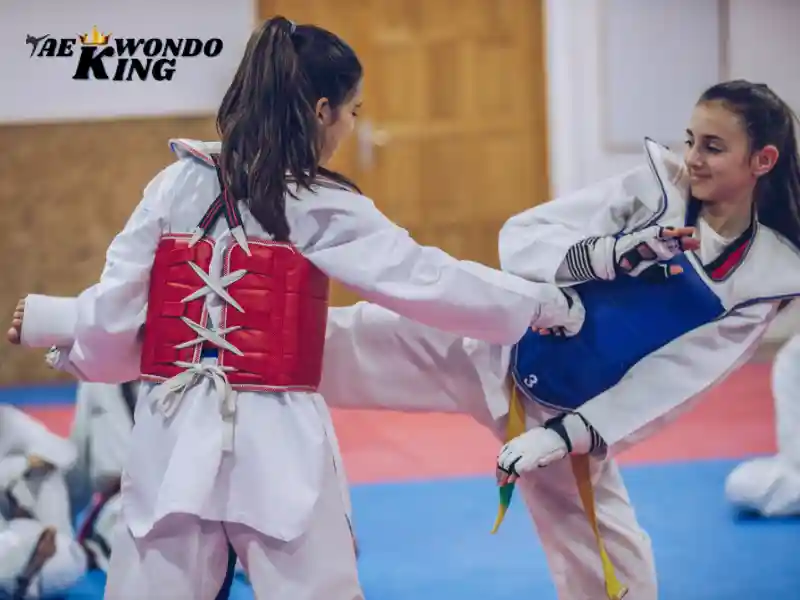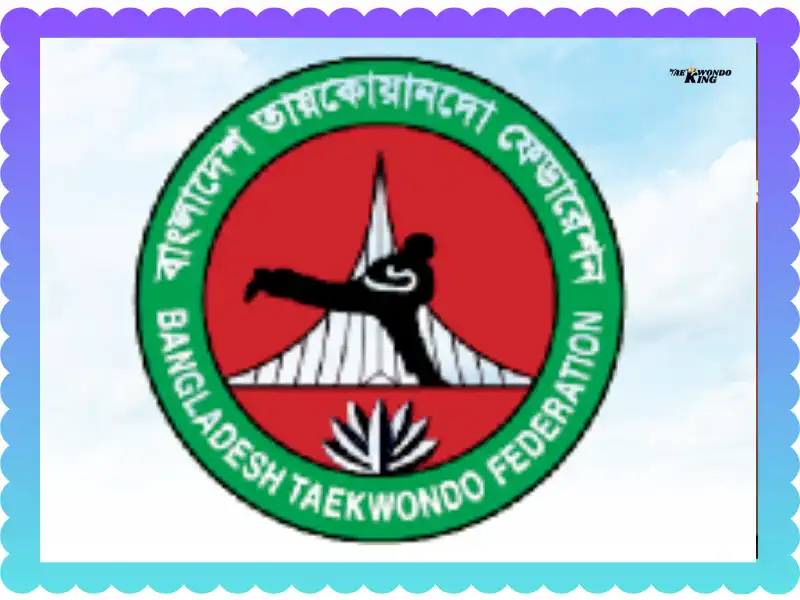
I still remember my first day stepping barefoot onto the mat, it wasn’t just a Taekwondo class, it was a glimpse into something bigger. Bangladesh Taekwondo might not always make headlines, but behind the scenes, it’s growing fast, fueled by grit, community, and quiet determination. Over the years, I’ve trained, competed, and even watched the Bangladesh Taekwondo Federation evolve from a small group in Dhaka to a respected name in international circles.
In this article, I’ll share what I’ve learned, the history, the struggles, and the sparks of promise lighting up local gyms and Olympic dreams. Stick around, whether you’re curious, nostalgic, or just love martial arts, there’s something here for you.
Check out the latest prize in Taekwondo equipment on Amazon.

A Brief History of Taekwondo in Bangladesh
When I first heard about Bangladesh Taekwondo, I never guessed it had such deep roots. But the more I trained, the more stories I uncovered, stories that connect Dhaka gyms to Korean dojangs and Olympic dreams. Let’s take a step back and see how it all began.
Early Adoption and Influence from South Korea
Did you know that Taekwondo in Bangladesh started gaining attention thanks to cultural ties with the South Korean government in the late 80s and 90s? I found this fascinating when one of my instructors shared how Korean coaches helped shape our early training methods. That quiet start planted the seeds for a national movement.
Taekwondo was first introduced in Bangladesh through South Korean influence and cultural exchange programs, shaping its early development.
Formation of the Bangladesh Taekwondo Federation (BTF)
I still remember hearing athletes talk with pride about the Bangladesh Taekwondo Federation. It wasn’t just a name, it was a turning point. The BTF gave structure to the sport, from official belts to local tournaments that finally felt real.
Year of affiliation: 1999
Total registered active athletes: 11
Total registered active officials: 4
Locations:
c/o National Sports Council, 62/3 Purana Polton Mtijheel Commercial Area, Dhaka-1000, Bangladesh
Ex-President: Mr. Quazi Murshed Hossain Kamal
Ex-Secretary General: Mr. Mahmudul ISLAM RANA
Contact:
- Tel:+88029586616, +8801912012073
- Tel:+88029586616, +8801912012073
STATUS: Level ll
The Bangladesh Taekwondo Federation was created to organize, promote, and officially govern the sport across the country.
Check out the latest prize in Taekwondo equipment on Amazon.
Major Milestones and Achievements
From medals at the South Asian Games to sending athletes abroad, Bangladesh Taekwondo has come a long way. I’ve seen students from small clubs go on to represent the country, proving how far dedication can take you. These moments aren’t just stats, they’re history in motion.
Bangladesh’s Taekwondo milestones include national competitions, international appearances, and ongoing growth under BTF leadership.
My Personal Experience with Bangladesh Taekwondo
People often ask me where it all began, and for me, it was a small dojang near Rajshahi, under the warm buzz of ceiling fans and the shouts of determined kids. That journey later took me across continents, from Rajshahi Taekwondo Dojang to competitions linked to the Bangladesh Taekwondo Union and even practice sessions in the U.S. Every step added a new chapter to my love for the sport.
How I Started Practicing (e.g., local club in Dhaka or the USA)
I started young, training barefoot on the tiled floors of a local club under the Rajshahi Divisional Taekwondo Association. The energy was raw, the passion real. No fancy mats, just heart, hustle, and that familiar echo of kihap bouncing off concrete walls.
Many taekwondo journeys in Bangladesh begin in grassroots dojangs run by local organisations.
Training Environment, Taekwondo Equipment Used, and Support System
We didn’t have top-tier taekwondo equipment back then. I trained with worn-out pads and shared gloves, but we made it work. Coaches, teammates, and even neighborhood uncles cheering us on, Bangladesh organisations often thrive on that kind of community spirit.
Training environments in Bangladesh often rely on minimal gear but strong local support systems.
Cultural Differences: If Trained in Both Bangladesh and the U.S.
Switching from Bangladesh to the U.S. felt like stepping into a different world, polished gear, silent warm-ups, and clockwork routines. But I missed the loud laughter, chai breaks, and unfiltered encouragement that Bangladesh Taekwondo culture brings.
Cultural contrasts in training style reflect broader differences in community dynamics and resources.
Check out the latest prize in Taekwondo equipment on Amazon.

Structure and Role of the Bangladesh Taekwondo Federation
Understanding how the Bangladesh Taekwondo Federation works gave me a whole new respect for the sport. It’s more than kicks and forms, it’s about organized growth, international connections, and guiding athletes toward global platforms. I’ve seen firsthand how this sports governing body helps shape the future of Taekwondo in Bangladesh.
Overview of Its Function as a National Governing Body
The Bangladesh Taekwondo Federation sets the rules, organizes championships, and works closely with regional clubs. Without their leadership, national tournaments and belt certifications wouldn’t run as smoothly.
BTF functions as the main sports governing body for taekwondo in Bangladesh, ensuring structure and nationwide reach.
Affiliation with World Taekwondo and International Events
I remember when our local club sent an athlete to a South Asian event under the Bangladesh national members list. That moment showed how deeply connected we are to World Taekwondo, including groups like World Taekwondo Africa.
BTF’s international ties allow Bangladeshi athletes to compete globally and gain recognition.
Recent Reforms or Digital Initiatives (e.g., Improved Account Log Systems)
One of the coolest changes I’ve seen recently is how BTF started moving online, adding smoother account log systems and digital registration. It might seem small, but it’s a big step for accessibility and transparency.
Recent tech upgrades help streamline events and member management across Bangladesh.
Check out the latest prize in Taekwondo equipment on Amazon.
Challenges and Opportunities in the Taekwondo Scene
Like any sport finding its footing, Bangladesh Taekwondo faces some real hurdles, but also exciting chances for growth. I’ve seen the frustration from underfunded clubs, but also the pride when young fighters break through. There’s a lot standing in the way, but even more waiting just ahead.
Funding Issues and Limited Awareness in Bangladesh
Let’s be honest, taekwondo doesn’t get the spotlight like cricket or even motorcycle racing in Bangladesh. Many clubs scrape by with personal donations, and public awareness is still growing.
Funding remains one of the biggest challenges for Bangladesh’s taekwondo scene, holding back talent and outreach.
Comparison with Other Sports (Motorcycle Racing, Mountaineering, Climbing, Netball)
Compared to mountaineering or climbing netball, taekwondo offers discipline, accessibility, and room to grow, yet it’s often overshadowed. While other niche sports are gaining media time, taekwondo still struggles to tell its story.
Taekwondo offers more structured pathways than many adventure or niche sports in Bangladesh.
Opportunities in Youth Development and Women’s Participation
I’ve coached girls who’ve never worn a dobok before, and now they’re state champions. There’s huge potential for taekwondo to shape youth identity, especially for girls. With support from Bangladesh sports organizations, this could be a game-changer.
Youth programs and women’s inclusion offer some of the brightest growth opportunities for taekwondo in Bangladesh.
Support from International Organizations
Groups behind the Disabled Sports Olympics and international federations have started extending grants and training resources. I’ve seen firsthand how this boosts confidence in local coaches and athletes.
International support is slowly making its way to grassroots Bangladesh taekwondo clubs, especially in underrepresented areas.
Check out the latest prize in Taekwondo equipment on Amazon.

Bangladesh in International Competitions
Watching Bangladesh athletes step onto global mats, whether in the Summer Olympics or the South Asian Games, has been a proud, emotional ride. I still remember shouting at the screen during a tense match against Sri Lanka. Moments like these show how far we’ve come.
Performances in the Summer Olympics, South Asian Games, and Asian Championships
Bangladesh hasn’t medaled yet at the Summer Olympics, but we’ve gained strong footing in regional events like the Asian Championships. Every match is a step forward.
Bangladesh taekwondo athletes are building global experience through consistent participation in regional and international events.
Notable Matches vs Countries like Sri Lanka, Afghanistan (AFG), South Korea
We’ve had memorable clashes, especially with AFG and Sri Lanka, where the fight went down to the last second. Facing South Korean athletes is like standing before your masters, but it pushes us to level up.
Notable bouts against regional powerhouses test Bangladesh athletes and sharpen their skills.
Upcoming Events to Watch
Keep an eye on the next South Asian qualifiers and friendlies against teams like QAT, SIN, and SRI. These aren’t just matches, they’re gateways to world-level exposure.
Bangladesh’s upcoming matches provide crucial visibility and ranking opportunities for its athletes.
How to Get Involved: Joining a Taekwondo Club in Bangladesh or the USA
If you’re thinking of jumping in, I promise it’s easier than you think. Whether you’re scrolling through a navigation main page or asking a local coach, taekwondo clubs in Bangladesh and the U.S. are surprisingly open to newcomers. I’ve helped a few friends join recently, and they haven’t looked back.
Finding a Club (Tips and Personal Suggestions)
In Bangladesh, just head to your local Bangladesh organisation listing or ask around at schools. In the U.S., search online using taekwondo directories and don’t forget to check the sidebar for hidden links for club ratings and reviews.
Most taekwondo clubs can be found via local organizations or verified online directories with clear contact details.
What to Expect: Training, Ranking System, Competitions
Expect sweat, discipline, and a lot of white belts staring at each other before bowing. The ranking system is strict but fair, and competitions come faster than you’d think.
Taekwondo offers a structured journey, from white belt basics to national-level competitions.
Where to Buy Gear and Uniforms
Start simple. In Bangladesh, many buy uniforms from local sports shops, though quality varies. In the U.S., sites with good item appearance, move filters, and high search appearance ratings help a lot.
Reliable gear can be found locally or online, just check reviews and sizing before ordering.
Check out the latest prize in Taekwondo equipment on Amazon.

Community and Cultural Impact
Taekwondo is more than kicks and belts, it’s become a source of pride and progress in many Bangladeshi communities. I’ve seen young kids in dusty alleys transform into confident, focused students, thanks to just a few months in the dojang. The impact goes far beyond the mat.
Taekwondo’s Role in Youth Development and Discipline
One of the first things I noticed teaching taekwondo was how quickly it builds discipline. From tying their belts to showing respect with every bow, kids start to carry these habits home and to school.
Taekwondo in Bangladesh helps develop youth discipline, focus, and confidence, especially in underprivileged areas.
Integration in Schools or Community Centers
Some of my proudest moments came from demo sessions at local Bangladesh organisations and school events. When taekwondo is offered in schools or community centers, students light up with curiosity.
Integrating taekwondo into schools and community programs creates accessible entry points for youth development.
Stories of Perseverance and Local Heroes
We’ve all seen those underdog stories, like a rickshaw puller’s daughter winning regional gold. I’ve met young fighters from rural areas who became local legends because they never gave up.
Bangladesh’s taekwondo scene is full of inspiring stories of perseverance, resilience, and community support.
Future Outlook
If you’ve been following recent updates on the community portal’s recent changes, you’ll notice that Bangladesh’s taekwondo future is looking sharper than ever. Between tech upgrades and new partnerships, things are finally moving with real momentum, and I’m excited to be part of it.
Plans by the Bangladesh Taekwondo Federation
From setting national benchmarks to launching youth academies, the Bangladesh Taekwondo Federation has started laying down long-term plans. I’ve attended meetings where change finally felt real.
BTF’s long-term plans focus on structure, youth training, and professionalizing local dojangs across the country.
Collaboration with the South Korean Government
There’s a strong bond forming with Korea again, and it’s beautiful to see. I’ve watched Korean coaches (Mr. Ju Sang Lee) bring new life into Bangladeshi training camps, sometimes even donating gear.
Collaboration with the South Korean government supports training, cultural exchange, and strategic growth of taekwondo in Bangladesh.
Digital Transformation: Websites, Shortened URL Download, PDF Printable Version
Gone are the days of chalkboards and paper records. With new websites, downloadable guides, and PDF printable versions, taekwondo in Bangladesh is finally stepping into the digital age, and it’s making everything smoother.
Bangladesh Taekwondo Federation’s digital shift improves accessibility, transparency, and online engagement for members.
Check out the latest prize in Taekwondo equipment on Amazon.

Conclusion
Looking back, my taekwondo journey in both Bangladesh and the U.S. has been more than just about sport, it’s been about finding community, resilience, and personal growth. From training in local dojangs in Rajshahi to cheering for Bangladesh at international events, I’ve seen how far we’ve come, and how far we can still go.
Taekwondo in Bangladesh is evolving fast, driven by passion, tradition, and the dreams of everyday people like you and me.
FAQs
South Korea is the birthplace of Taekwondo and still leads the world in training, talent, and Olympic wins. Learn more about its global influence in Taekwondo history.
Taekwondo blends high-speed kicks, mental focus, and respect. It’s not just a sport, it’s a way to build confidence and discipline. Discover what makes it so unique.
Bangladesh is in South Asia, known for its rich culture, resilience, and rising sports scene, including growing interest in martial arts like Taekwondo.
South Korea ranks number one globally in Taekwondo, with top-tier athletes and coaching. Their deep cultural roots give them a strong edge in competitions.
The two main styles are WT (World Taekwondo) and ITF (International Taekwondo Federation). Each has unique rules and techniques. Learn which one suits you best.
Taekwondo is about speed, technique, and inner strength. It builds physical skill while teaching respect, discipline, and self-control through training.
The highest Taekwondo rank is 9th or 10th Dan Black Belt, depending on the organization. It’s a rare honor earned through decades of dedication and mastery.
Yes! Taekwondo became an official Olympic sport in 2000. It features fast-paced sparring matches judged on technique, speed, and precision.
While Taekwondo isn’t a national game, it is South Korea’s national martial art and has global recognition as an Olympic sport with millions of practitioners.
The Bangladesh Taekwondo Federation oversees training, events, and international participation. It helps develop athletes and expand the sport nationwide.
You can join a local club like the Rajshahi Taekwondo Dojang or check with the Bangladesh Taekwondo Union. Most offer beginner classes and help with gear and grading.
Athletes like Dipu Chakma have represented Bangladesh in South Asian Games and more. They’re paving the way for future generations of martial artists.
You’ll need a dobok (uniform), belt, mouthguard, and sparring gear like shin pads and gloves. Some clubs also provide shared equipment for beginners.
Bangladesh has earned medals in the South Asian Games and continues growing on the global stage with support from local organizations and global partnerships.
Check out the latest prize in Taekwondo equipment on Amazon.


Founder, Owner, and CEO of TaekwondoKing.
He is one of the top 100 martial artists in the World and among the top 20 referees in Bangladesh.
Ehatasamul Alom is an esteemed Kukkiwon Certified Taekwondo 3rd Dan Black Belt with over 15 years of experience in this dynamic martial art. Born in Rajshahi, Bangladesh, Ehatasamul’s journey with Taekwondo began at the tender age of seven. His passion led him to compete at national and international levels, where he has bagged numerous awards and honors. He is also a member of the Taekwondo National Referee Panel.
With a Bachelor’s degree in Sports Science from the prestigious Rajshahi University, Ehatasamul has a deep understanding of the technical and scientific aspects of martial arts and some other martial arts.
In 2022, Ehatasamul created the “TaekwondoKing.com” to share his knowledge, Free Resources, Values, and Real experiences. His articles focus on Taekwondo training techniques, competition strategies, Sport Products Reviews, and the art’s rich history and philosophy. He also writes about the importance of mental fortitude and discipline, key aspects of his teaching philosophy. He has already launched many sports, Taekwondo, and health-related Free online tools. His goal is to inspire both beginners and seasoned practitioners worldwide through insightful and engaging content.
If you need any help, contact Ehatasamul Alom at any time.

